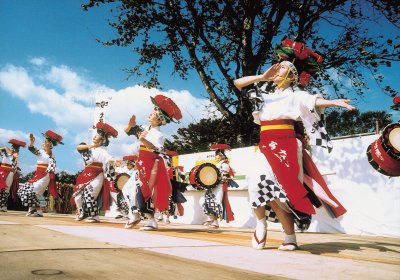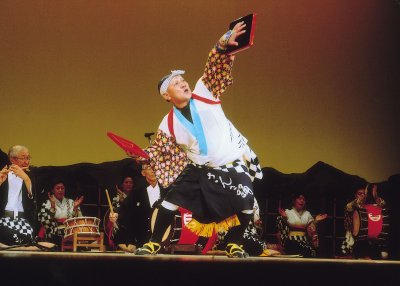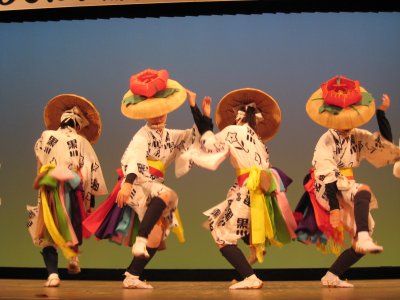
| Pseudonym reading | San Saodori |
|---|---|
| Specified type | Prefecture designation |
| Type | Intangible folk cultural property |
| Designated date | May 10, 2011 |
| Specified details | |
| quantity | |
| location | Morioka City Sanbon Yanagi area, Morioka City Kurokawa area, Morioka City Yamagishi area, Morioka City Motomiya area |
| owner | |
| Holding group | Sanbon Yanagi Sansa Dance Preservation Association, Kurokawa San Odori group, Yamagishi Sansa Dance Preservation Society, Omiya Sansa Odori Conservation Society (Morioka City Motomiya area) |
| Management organization | |
| home page |
Overview
As for the Sansa Odori, Morioka City and Shiwa-gun are the central areas of the area, and the south is Waga, Kami-hosei, Hanamaki, Kitakami, Esashi, Tono and Kamaishi, and the north is Iwate, Shimoshui and Miyako. It is the Bon festival dance that has been danced in the area.
The origin seems to be around the city formation period of the early modern castle castle Morioka. In addition, the name of the Sansa dance is seen in Masumi Kanoe's “Hinosu One song (Hitsuboshi)” (a collection of folk songs from the east country), and the performing arts of dance during the Tenmei Year (circa 1780) Is known to have been developed.
The style of the dance is the right-handed circle dance found in the Bon festival dance in Japan, followed by a whistling and distinctive dancer followed by a drumstick with a tight drum attached to the chest, and the inside of the circle is 1818 The master of the dance is the leader. The ugly hand crawls near the circle, and the screeching also hangs with the dancer. There is no other example where this drumming and whistling dance together.
The dance style was fixed from the early days, as it was customary for young and old men and women to gather freely in a certain place such as a local shrine ground or an open space and dance the night to a rooster. However, it has gradually been abandoned due to its firm organization and tradition, and now it is in a state where it has been performed in several areas and in some areas.
On the other hand, in the late Edo period, dance people were organized out of those who were dancing in a fixed-place type, and a form was created in which the old pots were decorated with garlands and waist belts, and dance around the local houses. From this house movement, it moves to the central area of the city, and the dance form of the town sink which is gated and dances at each house is born, and these have reached the present. In other words, it can be said that the present Sansa dance has been handed down by the organized dance groups.
A group organized from the late modern period to the early Meiji period, Sanbonyanagi Sansa Dance, Kurokawa Sansa Dance, Yamagishi Sansa Dance, Omiya Sansa Odori has been handed down to the present, following the history of the dance form from the old days. It is a representative group of dance people.
These groups are known to have old hand gestures, such as upper and lower hand gestures, and various hands under the influence of local performing arts such as dance dance, kagura, ken dance, taju dance, shiho dance, dance dance, lion dance, etc. He has created a style of dance, and has increased the number of works such as the mouthpieces and the blessed arts dance, orishiki dance, martial arts, and martial arts dances that were necessary for the family and the gate. In addition, the lyrics of the Sansa dance chopsticks are all modern Japanese song and song tones, which consist of 77.75.
In this way, Sansa dance not only has the contents of the dance rich in the change of the early modern period, but also expresses the regional characteristics well as a Bon dance with folk customs such as house circling and town sinking.
※ On the photo ... Omiya Sansa dance, in the photo ... Mitsumoto Yanagi dance, the photo lower ... Kurokawa sansa dance
image


